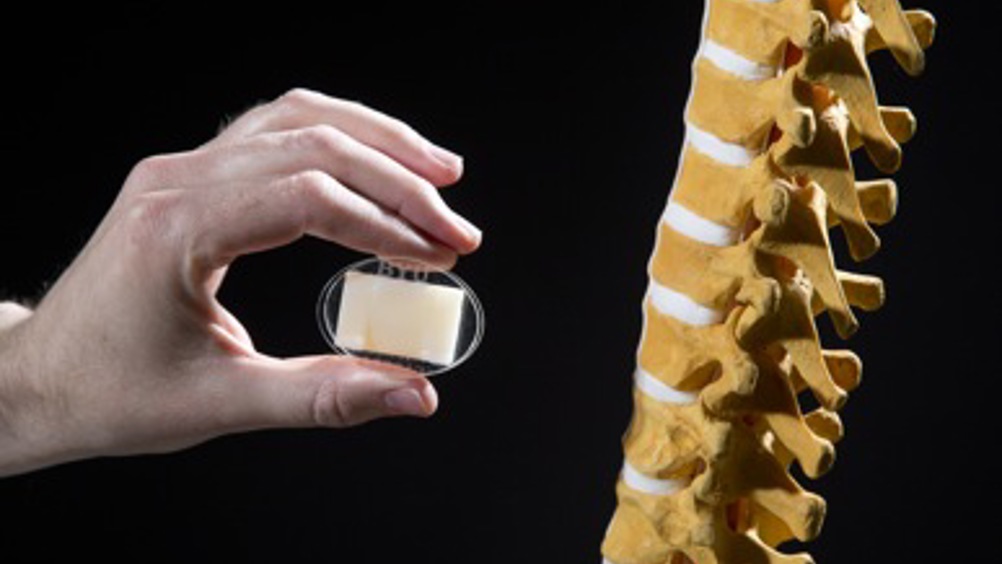Biomedical disc could improve treatment of chronic back pain
Researchers in the US have created a new biomedical device to treat chronic back pain.

According to a statement, an artificial spinal disc that duplicates the natural motion of the spine has been licensed from Brigham Young University (BYU) to a Utah-based company called Crocker Spinal Technologies.
The device is designed to slide in between the vertebrae of the human spine where there are 23 cartilage-filled discs that hold the vertebrae together and allow for spine movement.
While the discs are critical for movement, they can become the source of back pain when they degenerate or become herniated — a major health problem that is said to affect 85 per cent of Americans and costs the US economy $100bn (£64bn) every year.
‘Low back pain has been described as the most severe pain you can experience that won’t kill you,’ said Anton Bowden, a BYU biomechanics and spine expert. ‘This device has the potential to alleviate that pain and restore the natural motion of the spine — something current procedures can’t replicate.’
Register now to continue reading
Thanks for visiting The Engineer. You’ve now reached your monthly limit of news stories. Register for free to unlock unlimited access to all of our news coverage, as well as premium content including opinion, in-depth features and special reports.
Benefits of registering
-
In-depth insights and coverage of key emerging trends
-
Unrestricted access to special reports throughout the year
-
Daily technology news delivered straight to your inbox










UK Enters ‘Golden Age of Nuclear’
Anybody know why it takes from 2025 to mid 2030's to build a factory-made SMR, by RR? Ten years... has there been no demonstrator either? Do RR...